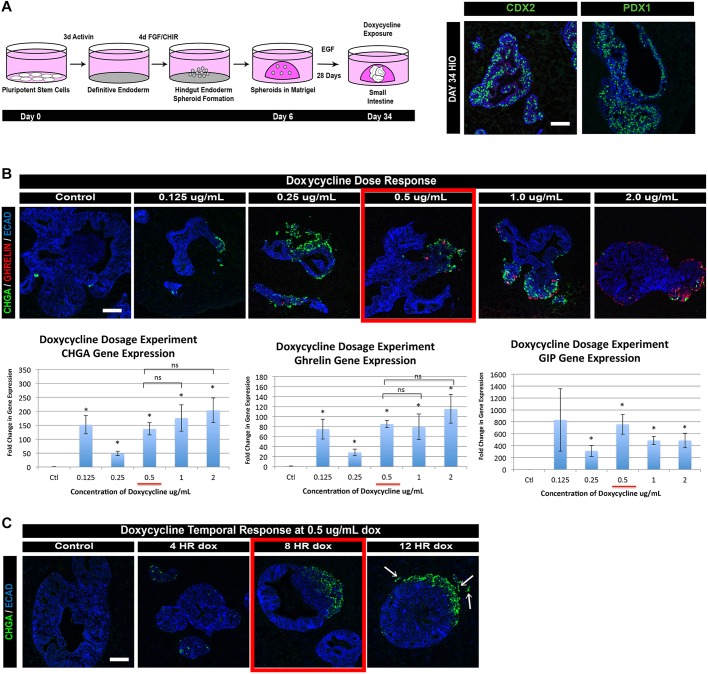Fig. 1.
Establishing an inducible neurogenin 3 overexpression system in HIOs to generate EECs. (A) We utilized an inducible NEUROG3 construct, which has previously been reported, within PSC lines throughout this study. The construct allows doxycycline-regulated expression of human NEUROG3. Using a previously published protocol, PSCs were differentiated into definitive endoderm using 3 days of activin A, then posteriorized into hindgut intestinal spheroids by manipulation of FGF and WNT signaling. Intestinal spheroids were then plated in a 3D matrix of Matrigel. At 34 days, HIOs robustly expressed the pan-intestinal marker CDX2 and contained regions that expressed the proximal intestinal marker PDX1. (B) Day 34 HIOs were given a 24-h pulse of doxycycline at increasing concentrations to determine optimal response in HIOs. HIOs were collected and analyzed by immunofluorescence and qPCR 7 days after doxycycline induction. Treatment with 0.5 μg/ml doxycycline resulted in expression of the endocrine marker CHGA as well as the hormone markers GHRL and GIP (n=3; mean ±s.e.m.). *P<0.05 (compared with control; Student's t-test). (C) Day 34 HIOs were exposed to 0.5 μg/ml doxycycline for varying amounts of time to assess optimal length of exposure within HIO cultures. HIOs were collected and analyzed 3 days after doxycycline induction. An 8-h pulse of 0.5 μg/ml doxycycline allows efficient induction of CHGA+ cells without causing aberrant EECs within the mesenchymal compartment (12 HR, arrows). ECAD, E-cadherin (cadherin 1). Scale bars: 50 μm. See also Fig. S1.

